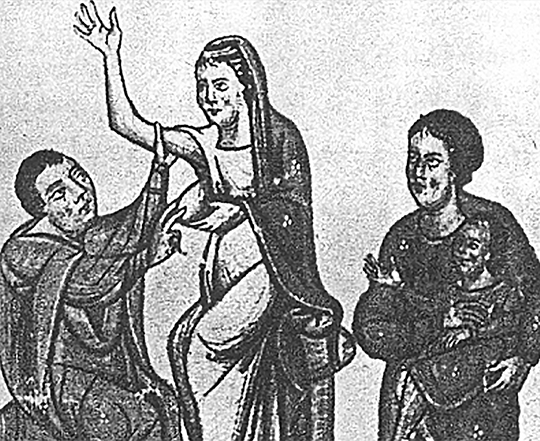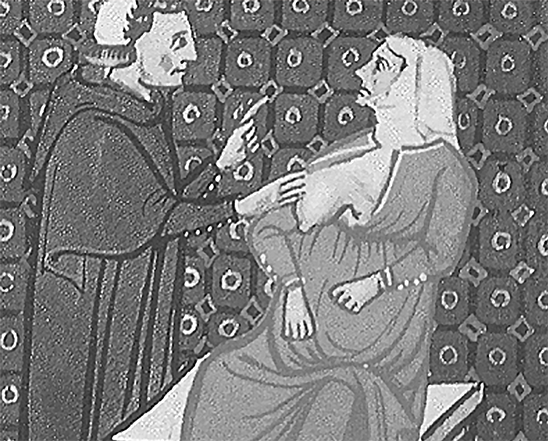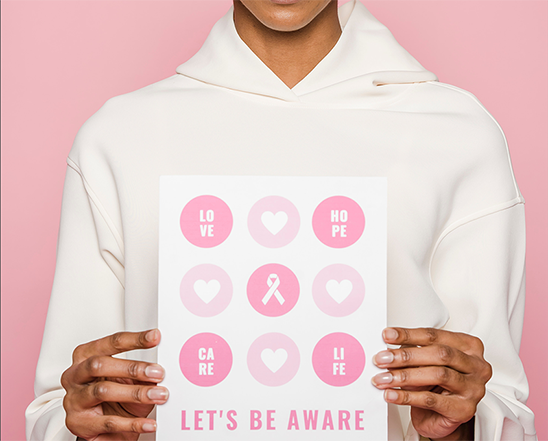October is Breast Cancer Awareness Month
Cancer has been around pretty much since humanity has. Fossilized bone tumors have been found as well as skull and neck deformities most likely caused by cancer. By definition, cancer is caused by the rapid, uncontrollable growth of cells in the body. Since the body is composed of trillions of cells, cancer can occur in any part.

Breast cancer is cancer that starts in the breasts. While a significant number of cases of breast cancer occur in women, men are also susceptible to this disease. The worst part about cancer is it does not just affect the body part where it started; it can also spread to other parts of the body. This spread of cancer cells is called metastasis. Today, there are a number of ways to detect and treat breast cancer but knowing a bit of context about this disease may help us understand it a bit more.

History of Breast Cancer
The earliest records of cancer date back to medical records in 3,000 to 2,500 B.C.E. The Edwin Smith Surgical Papyrus describes some of the earliest recorded cases of breast cancer. Even earlier than that, Hippocrates wrote descriptions about what could be the stages of breast cancer way back in 400 B.C.E. People in Ancient Greece are also known to have made offerings in the shape of breasts to the god of medicine.
During these early years, doctors experimented surgically by trying to remove and destroy tumors, especially in the First Century. Back then, medicine was obviously not as advanced as it is now and many medical practitioners made decisions based on observable conditions. They even once linked breast cancer with the life-long end of a woman’s menstrual cycle or menopause.
By the Middle Ages, religion heavily influenced everything, including science and medicine. Christians and their leaders thought surgeries were barbaric and thought faith healing was the panacea to all diseases. Islamic medical practitioners, on the other hand, went back to Greek medical texts to know more about previous cases of breast cancer.
A breakthrough was finally made during the Renaissance when doctors started exploring the human body using surgical procedures. Known as the Scottish Father of Investigative Surgery, John Hunter identified lymph, the fluid carrying white blood cells throughout the body, to be the cause of cancer.

Early Detection is Crucial
As with any other type of cancer, early detection is oftentimes the crucial key to recovery. The earlier the cancer cells are discovered, the higher the chance of treatment being successful because the cells can be stopped or slowed down from spreading. Once the doctor has diagnosed a patient with breast cancer, the next step is to determine the cancer stage, determine the prognosis, and start the best options for treatment.
Some of the tests and procedures used to figure out the prognosis of cancer include, but are not limited to, blood tests, mammograms, breast MRIs, bone scans, CT scans, and PET scans. Breast cancer stages range from 0 to IV, with 0 as non-invasive and IV being the most advanced stage with metastasis or the spread of breast cancer to other parts of the body.
According to the CDC, some of the signs every individual should be looking out for warning signs of breast cancer are:

- Strange or unusual lump/s in the breast or underarm (armpit).
- Thickening or swelling of part of the breast.
- Irritation or dimpling of breast skin.
- Redness or flaky skin in the nipple area or the breast.
- Pulling in the nipple or pain in the nipple area.
- Nipple discharge other than breast milk, including blood.
- Any change in the size or shape of the breast.
- Pain in any area of the breast.
Some of these signs don’t automatically mean breast cancer but if you are worried, a checkup with your primary care provider is warranted.
Survival is More Than Possible
While cancer is still an incurable disease, it is treatable and there are thousands of women and men who can attest to surviving breast cancer. The statistic looks positive, especially for breast cancers that are not metastatic and non-invasive. The mortality rate has been steadily declining in recent years thanks to the continuous advancement of medicine and technology.

Surgery, radiation, and chemotherapy are some options for breast cancer patients to start treating their illnesses. Working with a doctor to come up with the best treatment plan is the best route for breast cancer patients. We’ve certainly come a long way since when the Ancient Greeks and Egyptians thought cancer was a curse but there is always still more to learn.
The best line of defense against breast cancer, or any type of cancer is early detection and treatment. New research and clinical trials come out every year with the copes of curing cancer, but until then, we can only hope that a decrease in cancer cases is seen in the future.